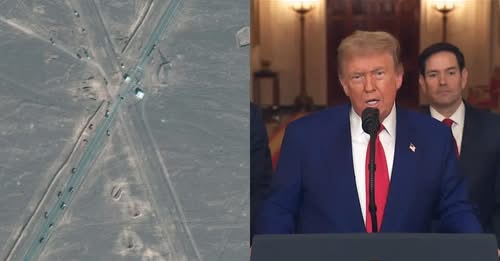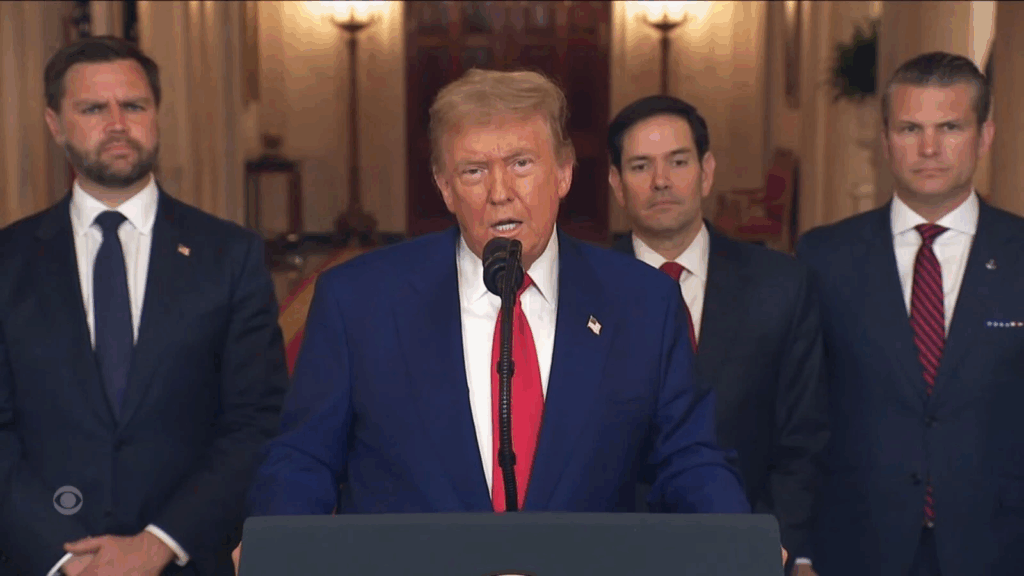
President Donald Trump Declares Iran’s Underground Nuclear Facilities Have Suffered Heavy Damage from U.S. Military Operations

President Donald Trump announced that Iran’s underground nuclear sites had sustained the most severe damage as a result of U.S.-led military strikes.
“Massive damage has occurred at all nuclear sites in Iran, as shown by satellite imagery. The word ‘obliterated’ is entirely accurate!” Russia’s TASS news agency quoted Trump’s post on his Truth Social account late on June 22. “The most severe damage happened in the deeply underground areas. The targets were hit!” he emphasized.
According to The Times of Israel, Trump previously stated that U.S. armed forces had successfully attacked three nuclear sites in Iran — including Fordow, Natanz, and Isfahan.

“A large number of bombs were dropped on Fordow,” he wrote, referring to the heavily fortified underground facility believed to play a central role in Iran’s nuclear program. “All aircraft have exited Iranian airspace and are safely en route back to base.”
Trump also shared a post from an open-source intelligence account claiming the Fordow site had been “wiped out.”
The decision by President Trump came more than a week after Israel launched its own campaign targeting Iran’s nuclear infrastructure. That operation inflicted significant losses on Iran’s air defense systems and claimed the lives of numerous military officers and senior nuclear scientists. In response, Iran fired dozens of ballistic missiles at Israeli territory.
Details of the U.S. military campaign were revealed by President Trump in a televised address from the White House at 10 p.m. local time, with Vice President JD Vance, Secretary of State Marco Rubio, and Secretary of Defense Pete Hegseth in attendance.
“Our objective is to eliminate Iran’s uranium enrichment capability and neutralize the nuclear threat posed by a nation accused of sponsoring terrorism,” Trump declared. “I can announce to the world that this operation has been an outstanding military success. Iran’s critical nuclear enrichment facilities have been completely destroyed.”
An unnamed Israeli official told Axios that the U.S. deployed B-2 stealth bombers in the operation. These aircraft are capable of carrying GBU-57 bunker-buster bombs weighing approximately 13,600 kg — nicknamed the “bunker buster” — able to penetrate up to 61 meters of reinforced concrete before detonation.

According to Fox News commentator Sean Hannity, six such bombs were used against the Fordow facility. Meanwhile, the Natanz and Isfahan sites were hit by 30 Tomahawk cruise missiles launched from U.S. submarines approximately 640 km away.
President Trump reportedly called Israeli Prime Minister Benjamin Netanyahu immediately after the airstrikes concluded. Axios reported that Israel had been notified in advance of the operation, while Israel’s Channel 12 confirmed that a small group of senior ministers held an emergency meeting just before Trump’s decision was announced.
In a video released prior to Trump’s address, Prime Minister Netanyahu thanked the U.S. President for his decisive action.
Previously, the U.S. had issued vague signals regarding its involvement in a military campaign. On June 19, Trump stated he would decide within two weeks, causing concern in Israel and prompting preparations for unilateral action.
Iran’s state-run IRNA news agency confirmed attacks on the three nuclear sites — Fordow, Natanz, and Isfahan. From Qom province, home to the Fordow facility, IRNA reported that air defense systems had been activated, though part of the site had been struck.
In Isfahan, a local official confirmed an attack near the nuclear plant, though no further details were provided.
Iran’s Atomic Energy Organization issued a statement affirming that nuclear activities would continue despite the attacks and described them as violations of international law, though it did not specify the extent of the damage.

Iranian media cited the National Nuclear Safety System Center, confirming no radiation leaks had been detected after the strikes.
“There is no risk to residents living near the affected sites,” the statement assured.
During a program aired on Iran’s state-run IRIB channel, a commentator remarked that all U.S. soldiers and citizens in the Middle East could now be considered “legitimate targets.” A map displaying U.S. military bases in the region was broadcast alongside a warning: “You started this, and we will finish it.”
However, U.S. outlets such as CBS News reported that Washington had sent a message to Tehran immediately after the strikes, clarifying that the military action was limited strictly to Iran’s nuclear program.
In his speech, President Trump stressed that Iran still had the opportunity to choose a path of peace but warned that if not, the consequences could be “far greater than what has happened over the past eight days.”
“If peace does not come soon, we will continue targeting additional objectives — swiftly and precisely. Many of them could be eliminated within minutes,” he said.
In Israel, the Home Front Command issued emergency directives: banning all public gatherings nationwide, closing all schools, and permitting only essential businesses to operate. Israeli airspace was also shut as an additional precautionary measure.
The Israeli Ports Authority announced that land border crossings with Egypt and Jordan would remain open.
Israel’s military campaign, which began on June 13, targeted senior military leaders, nuclear scientists, uranium enrichment facilities, and Iran’s ballistic missile program. In retaliation, Iran launched over 470 ballistic missiles and around 1,000 drones into Israeli territory.
Để lại một phản hồi